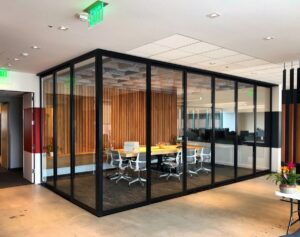In the rapidly evolving world of metal fabrication, precision and adaptability are key factors that drive innovation. Among the advancements in this field, stainless steel laser cutting services stand out as a game-changer. By offering unparalleled accuracy and flexibility, these services are reshaping the possibilities in metal design and manufacturing. This blog explores how advanced stainless steel services are enhancing design flexibility and paving the way for future developments in the industry.
Precision and Accuracy Redefined
At the core of advanced laser cutting services is the ability to deliver exceptional precision. Traditional cutting methods, while effective, often come with limitations in accuracy and consistency. Laser cutting, however, uses a high-powered laser beam to cut through stainless steel with remarkable precision. This technology ensures that each cut is exact, with minimal deviation from the desired specifications.
The precision of laser cutting is crucial for industries where exact measurements and clean cuts are essential. Whether it’s for intricate parts in aerospace engineering or detailed components in electronics, the accuracy of laser cutting services ensures that parts fit together seamlessly, reducing the need for additional finishing work. This level of precision also enhances the overall quality of the final product, leading to fewer errors and a better end result.
Enhancing Design Flexibility
One of the most significant advantages of stainless steel laser cutting services is their impact on design flexibility. Unlike traditional cutting methods, which may require specific tooling and setup for each new design, laser cutting allows for rapid adjustments and customisation. This flexibility is particularly valuable in industries that demand frequent changes or unique designs.
With laser cutting, designers can create complex geometries and intricate patterns that would be challenging or impossible with other methods. The technology supports the creation of detailed designs with tight tolerances, allowing for creative freedom and innovation. This capability is transforming how products are conceived and manufactured, enabling designers to push the boundaries of what is possible with stainless steel.
Speed and Efficiency in Production
Advanced laser cutting services also offer significant improvements in speed and efficiency. The automated nature of laser cutting means that once a design is programmed, the cutting process can be completed quickly and with minimal manual intervention. This efficiency translates into faster production times and the ability to meet tight deadlines without compromising on quality.
The speed of laser cutting is particularly beneficial for industries that require large volumes of parts or rapid turnaround times. In sectors like automotive or consumer goods, where time-to-market is critical, the efficiency of laser cutting services can provide a competitive edge. Additionally, the reduced need for secondary processes, such as deburring or finishing, further enhances the overall efficiency of the manufacturing process.
Cost-Effectiveness and Waste Reduction
Cost considerations are always a factor in manufacturing, and stainless steel laser cutting services offer advantages in this regard as well. The precision of laser cutting minimises material waste by ensuring that cuts are exact and efficient. Unlike traditional methods that may produce significant offcuts or require additional trimming, laser cutting reduces excess material and optimises the use of stainless steel sheets.
This efficiency not only helps in reducing material costs but also lowers overall production expenses. The reduced need for manual labour and the minimisation of post-processing work further contribute to cost savings. By streamlining the fabrication process and reducing waste, laser cutting services offer a cost-effective solution for manufacturers looking to maximise their resources and budget.
Advancements and Future Trends
The field of stainless steel laser cutting is continually evolving, with ongoing advancements that promise to further enhance its capabilities. Innovations in laser technology, such as improved beam quality and faster cutting speeds, are pushing the boundaries of what can be achieved. Additionally, the integration of automation and advanced software is making it easier to handle complex designs and large production runs.
Future trends in laser cutting may also include the development of even more versatile and adaptable systems. As technology progresses, we can expect to see enhancements that further improve precision, speed, and material handling. These advancements will continue to drive innovation in metal fabrication, offering new opportunities for design and manufacturing.
Conclusion
Advanced stainless steel laser cutting services are at the forefront of transforming the metal fabrication industry. By providing unparalleled precision, design flexibility, and production efficiency, these services are enhancing the capabilities of designers and manufacturers alike. The ability to create intricate and customised designs with minimal waste and cost makes laser cutting a valuable tool for modern manufacturing.
As technology continues to advance, the potential for laser cutting services will only grow, offering even greater possibilities for innovation and design. Embracing these advancements allows businesses to stay competitive and meet the evolving demands of the market. In the ever-changing landscape of metal fabrication, laser cutting services represent a significant leap forward, shaping the future of how we approach design and production.




